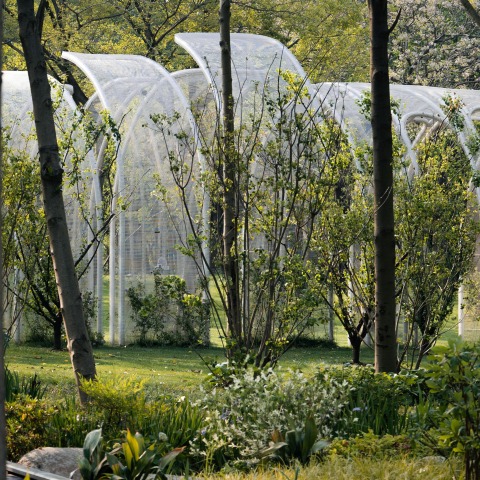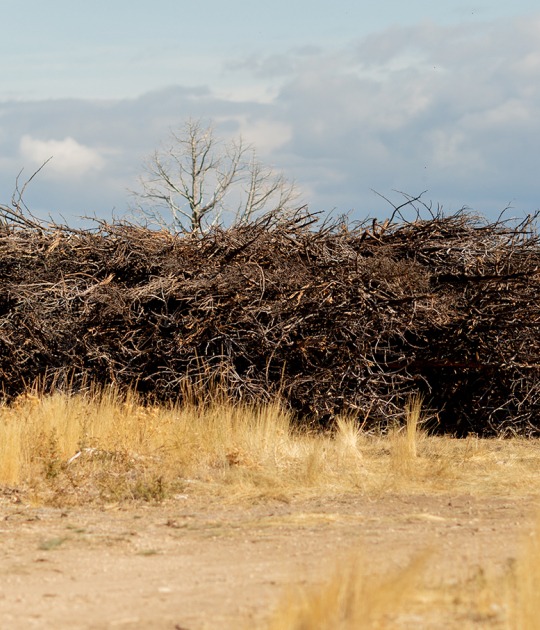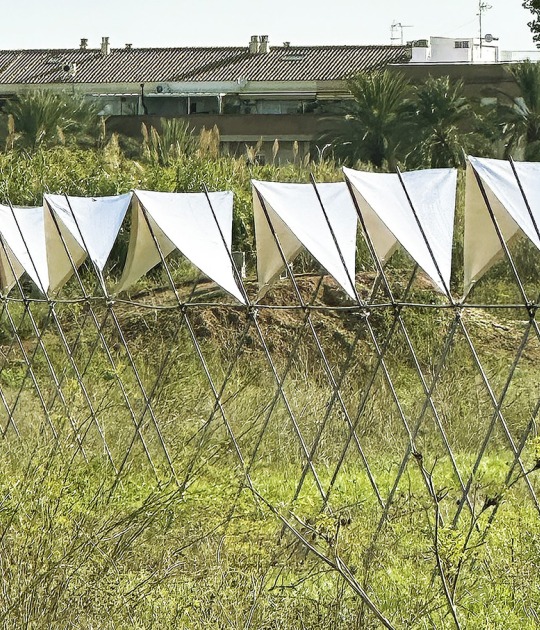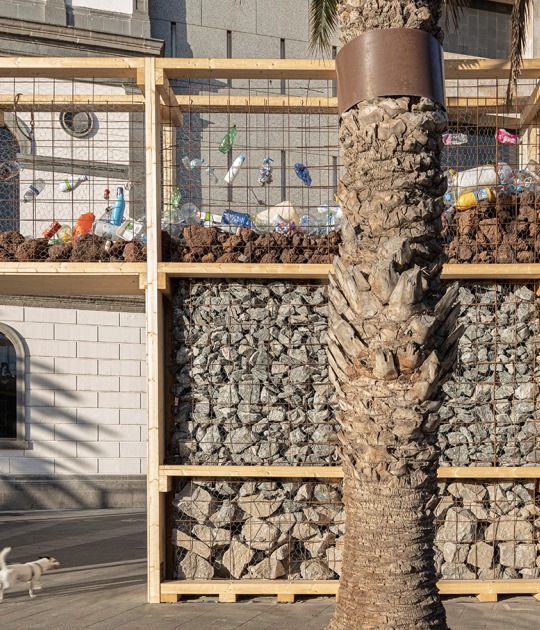The structure is developed from white painted steel mesh over 1.2 kilometres, where it opens and closes, stands alone, overlaps, and even disappears, thus representing Wutopia Lab's commitment to modernizing traditional elements using contemporary materials and shapes.

Project description by Wutopia Labto
"A wandering dragon-like Emerald Screen Pergola".
"Here the frailest leaves of me yet my strongest lasting."
Walt Whitman.
In March 2024, Wutopia Lab's wandering dragon-like Emerald Screen Pergola was officially unveiled at Bogong Island Ecology Park in Wuxi, China.
The Emerald Screen Pergola is an important architectural feature in classical Chinese gardens. It is typically constructed from bamboo or wood, forming roofless corridors, pavilions, and walls. Climbing plants are then grown to eventually cover the walls and roofs. This design not only creates a visual focus that integrates nature with space but also fosters a series of cultural activities related to flowers, making it a significant cultural symbol preserved in traditional Chinese paintings. However, as a temporary structure, apart from the flower trellises, most other parts have disappeared from the remains of classical gardens.

Emerald Screen Pergola by Wutopia Lab. Photograph by CreatAR lmages.
Bogong Island originally had a 1.2-kilometer-long steel trellis covered with wisteria and roses. Over time, it fell into disrepair and became unsafe, necessitating a reconstruction. Wutopia Lab used the feather-like shape of leaves as a prototype to create various combinations of wall and roof structures along the 1.2-kilometre stretch. These structures open, close, stand-alone, overlap, and even disappear, redefining the previously monotonous design of the trellis corridor. The rich and vibrant interplay of light evokes the image of a Dragon Dance, hence the name "A wandering dragon-like Emerald Screen Pergola".
The corridor's structure uses round steel as its framework and is covered with steel meshes that have been painted white for plants to climb. Before the plants climb up, it creates a mist-like visual amidst the beautiful scenery.
"I decided to design a flower pavilion to serve as both the entrance to the corridor and the park. Similarly, I used the white feather-like steel meshes by stacking them layer by layer to create a central, roofless structure. This would be my semi-transparent Pantheon."
YU Ting.

Emerald Screen Pergola by Wutopia Lab. Photograph by CreatAR lmages.
Its completion will also mark the grand reopening of Bogong Island Ecology Park.
The current phase, featuring the white transparent Emerald Screen Pergola and the flower pavilion, marks the first stage. The second stage will see plants climbing the corridor to transform it into a green structure. In the third stage, flowers will bloom, with various colours of ivy, jasmine, roses, honeysuckle, roses, and retained wisteria blossoming in succession. Thus, this vibrant wandering dragon-like structure will come to life, seemingly ready to take flight in its natural surroundings. This represents Wutopia Lab's commitment to innovatively modernizing traditional designs using contemporary materials and forms.
"This is the grass that grows wherever the land is and the water is..."
Walt Whitman.





























































